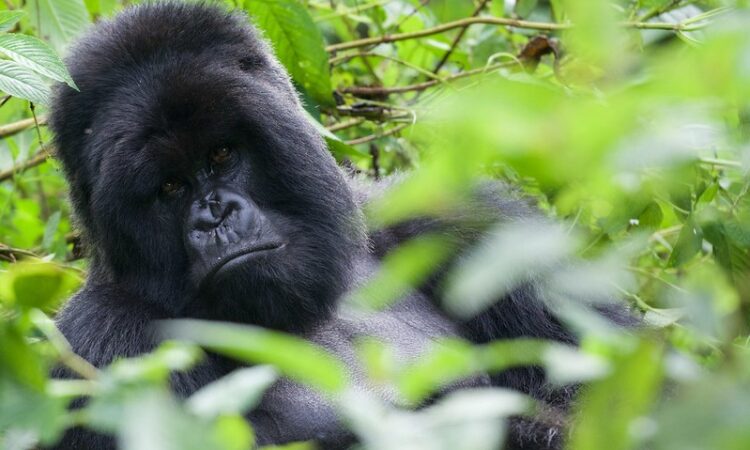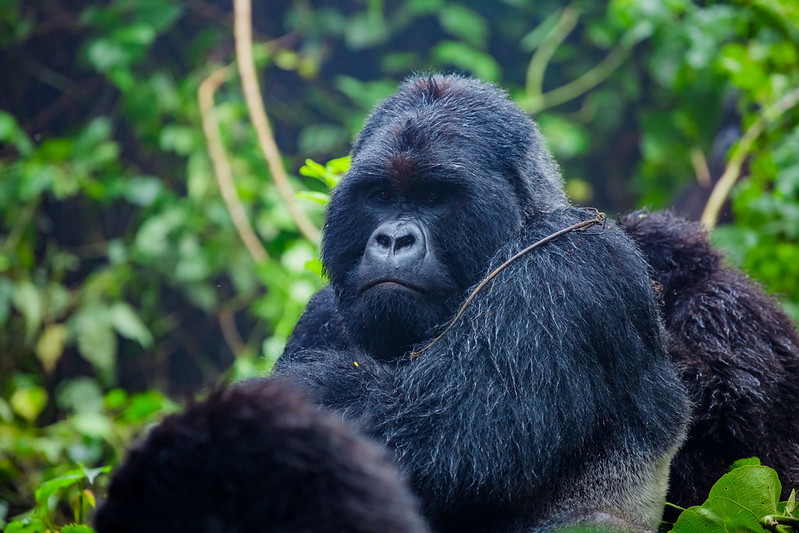
How fit should you be for gorilla trekking in Uganda, Rwanda and Congo?
How fit should you be for gorilla trekking in Uganda, Rwanda and Congo? Gorilla trekking frequently entails going for long miles and hours through impenetrable bush in order to locate the primates. The action necessitates perseverance, energy, and some amount of fitness. Tourists must be emotionally prepared and physically prepared to accomplish the activity regardless of the difficulties they confront.
Although gorilla trekking normally necessitates physical endurance, the activity is available to anyone, including the unfit, crippled, and old. There are provisions and mechanisms in place to guarantee that everyone may observe the primates.
The crippled, aged, and others who are unable to walk are assigned to gorilla groups near the park administration. Some gorilla groups may be found in as little as 30 minutes. There is an option for those who are unable to walk due to age or handicap. The tourist can be taken straight up to the monkeys’ enclosure using porters and a sedan chair.
Travelers who are elderly or physically challenged are recommended to schedule your gorilla trekking excursion as soon as possible so that additional preparations can be made. The tour firm must arrange for the distribution of an easy gorilla group, as well as the employment of extra porters and the provision of a customized sedan chair if necessary.
For the elderly, gorilla trekking entails hiring 8 porters and a sedan chair, both of which cost $500. The sedan chairs are intended for the physically impaired, although they may also be used by the physically inactive.
All tourists are encouraged to hire porters for gorilla trekking and hiking sticks to guarantee a smooth journey. Porters can assist with heavy bags, cameras, binoculars, food, beverages, rain coats, and other items.
Remember that carrying heavy items might cause you to get fatigued, hungry, and exhausted, especially if you choose a more challenging route. When trekking on steep and slippery routes, hiking sticks are essential for support.
The sticks are provided free of charge at the introductory briefing at the park office. When out in the bush, it is critical to obey all of the gorilla trekking guidelines. To avoid getting into trouble, always obey the Park Rangers’ directions.
Which exercises can I do to keep fit for gorilla trekking in Uganda, Rwanda and Congo?
Even if you are confident in your condition, it is critical to prepare both physically and emotionally before tracking gorillas. Preparation is essential for completing any endeavor. For individuals who are unsure about their fitness, we recommend starting these typical workout routines two weeks before going gorilla trekking:
Take along walks.
Prepare your body for long treks or excursions. Take regular walks in adjacent woodlands, around your house, or near your place of work two weeks before going gorilla trekking. This will prepare your body for the rigors that come with gorilla trekking.
Stretching.
Stretching helps to warm up and loosen the muscles in the body. It helps your body deal with muscle tightness and soreness throughout long hours of hiking if done correctly.
Jogging.
Jogging is a great form of fitness exercise to do when preparing a gorilla trek in Uganda, Rwanda or Congo. Jogging is a good form of cardiovascular activities that keeps your heart and lungs in good shape. Jogging is also a great way to build your muscle strength, in turn helping you ease your hiking experience during your gorilla trek in Uganda, Rwanda and Congo.
Resistance Training.
Trekking gorillas may need traversing muddy and slippery terrain, crossing streams, and negotiating over tree roots or fallen branches. It can be advantageous to have high core strength, balance, and stability. Strength training activities like squats, lunges, and core workouts can help you gain strength and stability.

It is crucial to remember that gorilla treks are generally customized to the physical level of the party, and guides will accommodate varying fitness levels. However, if you have any pre-existing medical illnesses or concerns, you should assess your fitness honestly and talk with your healthcare professional. Those with a moderate degree of fitness can easily undertake gorilla trekking in Uganda, Rwanda and Congo.
When is the best time to see gorillas in Uganda, Rwanda and Congo?
The dry seasons, which are better suitable for hiking, are from mid-December to early February, and from June to September. Don’t be put off by the rains in November and March-May since you’ll have the woods and mountains to yourself, as well as the guides and gorillas.
What to pack for gorilla trekking in Uganda, Rwanda and Congo?
Visitors going on a gorilla trekking safari should bring hiking shoes to keep your feet dry, a long-sleeved shirt and trousers to keep you warm, a rain jacket to protect you from rain, a warm sweater, a backpack to carry your essentials, energy snacks, a walking stick, a camera, and so on.
To summarize, viewing gorillas in their natural habitat is a wonderful experience, and being physically prepared will boost your overall enjoyment!


